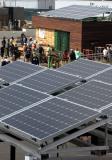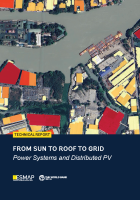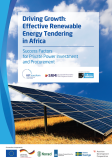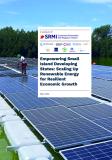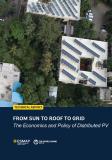Publications
Rapid growth of distributed photovoltaics (DPV) has upended how engineers traditionally think about electric power systems. Consumers now increasingly generate their own power and feed it to the grid. Poorly managed DPV poses distinct risks for power systems as penetration increases. Yet, low- and middle-income countries can benefit from this clean distributed energy resource. How can DPV and power systems be planned and operated to mitigate risks and reap technical benefits? This report presents a menu of DPV technical solutions applicable across diverse contexts.
Balancing DPV supply with local loads, as far as practical, can help keep grid operations within technical limits. A grid’s hosting capacity for DPV can also be enhanced on multiple fronts to cope with changed conditions. Many solutions are inexpensive. Inverter programming unlocks valuable services. Anticipating challenges and opportunities can avoid costly fixes. All countries can benefit from a grid code and planning approach that reflect expected growth of distributed resources. Prudent technical criteria can be used to streamline new approvals for grid-friendly DPV. These measures also require the timely capacity building of personnel. This report is aimed mainly at a technical audience, while introducing non-technical readers with the issues.
This report is the second in the From Sun to Roof to Grid series.
ESMAP.
From Sun to Roof to Grid: Power Systems and Distributed PV. ESMAP Technical Report (English). Washington, D.C. : World Bank Group. http://documents.worldbank.org/curated/en/099092823150090235/P174100051121a0c7098f202fb8d47a831c
